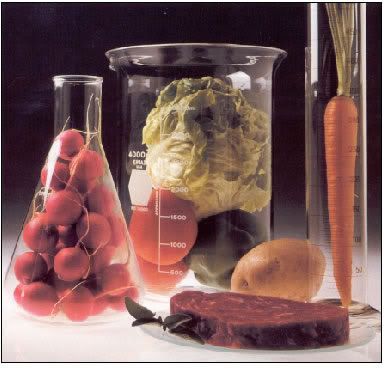Effect of 6-Month Calorie Restriction on Biomarkers of Longevity, Metabolic Adaptation, and Oxidative Stress in Overweight Individuals.
PROLONGED CALORIE RESTRICtion increases life span in rodents and other shorter-lived species. Whether this occurs in longer-lived species is unknown, although the effect of prolonged calorie restriction in nonhuman primates is under investigation. One hypothesis to explain the antiaging effects of calorie restriction is reduced energy expenditure with a consequent reduction in the production of reactive oxygen species (ROS). However, other metabolic effects associated with calorie restriction, including alterations in insulin sensitivity and signaling, neuroendocrine function, stress response, or a combination of these, may retard aging.
Total energy expenditure is made up of resting energy expenditure (50%–80% of energy), the thermic effect of feeding (~10%), and nonresting energy expenditure (10%–40%). Whether total energy expenditure is reduced beyond the level expected for a given reduction in the size of the metabolizing mass following calorie restriction is debated. Leibel et al showed that a 10% weight loss reduced sedentary 24-hour energy intake for weight maintenance between 15% and 20% in obese patients, suggesting that metabolic adaptation occurs in humans. However, the weight loss was achieved quickly with a liquid diet and, with the exception of several normal-weight patients in the study by Leibel et al, the effects of prolonged calorie restriction on energy expenditure in nonobese humans have not been assessed. In rhesus monkeys, resting energy expenditure adjusted for fat-free mass (FFM) and fat mass was lower after 11 years of calorie restriction. Similarly, total energy expenditure was lower in monkeys following 10 years of weight clamping. Studies in rodents have proven more controversial with reports of decreased, no change, or increased adjusted energy expenditure in calorie restriction vs ad libitum fed–animals.
One of the most widely accepted theories of aging is the oxidative stress theory, which hypothesizes that oxidative damage produced by ROS accumulates over time, leading to the development of disease such as cancer, aging, and ultimately death. Reactive oxygen species are byproducts of energy metabolism, with 0.2% to 2.0% of oxygen consumption O2 resulting in ROS formation. Reactive oxygen species attack lipids, proteins, and DNA, generating a number of products that affect normal cell functioning. Studies in rodents subjected to calorie restriction demonstrate a 30% decrease in 8-oxo-7,8-dihydroguanine (8-oxodG) in brain, skeletal muscle, and heart; similar reductions in carbonyl content in brain and muscle; and transcriptional patterns that suggest decreased oxidative stress in response to calorie restriction. Rhesus monkeys subjected to calorie restriction exhibit divergent responses in the expression of genes involved in oxidative stress.
Core body temperature and levels of dehydroepiandrosterone sulfate (DHEAS) and insulin are proposed biomarkers of calorie restriction and longevity in rodents and monkeys. Data from the Baltimore Longitudinal Study of Aging support the association between longevity and temperature and insulin and DHEAS levels; men with plasma insulin concentration or oral temperature below the median, and DHEAS levels above the median, live longer. Furthermore, in a cross-sectional study that compared individuals following self-imposed nutritionally adequate calorie restriction for 6 years with normal-weight controls, Fontana et al found that participants in the calorie restriction group had lower levels of serum glucose, insulin, and markers of atherosclerosis.
The aims of this study were to establish whether prolonged calorie restriction by diet alone or in conjunction with exercise can be successfully implemented in nonobese individuals and to determine the effects of the interventions on established biomarkers of calorie restriction, sedentary energy expenditure, and oxidative damage to DNA and proteins.
COMMENT
Since the pioneering experiments by McCay and Maynard, it has been known that calorie restriction extends life span in rodents and other lower species. However, little is known about the long-term effects of calorie restriction in humans. In the current study, we examined the effects of 6-month calorie restriction on biomarkers of calorie restriction, energy expenditure, and oxidative stress in humans. Our results indicate that prolonged calorie restriction caused: (1) a reversal in 2 of 3 previously reported biomarkers of longevity (fasting insulin level and core body temperature); (2) a metabolic adaptation (decrease in energy expenditure larger than expected on the basis of loss of metabolic mass) associated with lower thyroid hormone concentrations; and (3) a reduction in DNA fragmentation, reflecting less DNA damage.
Numerous biomarkers of calorie restriction have been identified in rodents including temperature, and DHEAS, glucose, and insulin levels. Roth et al recently observed that body temperature and insulin and DHEAS levels were also altered in monkeys subjected to calorie restriction, validating their usefulness as biomarkers in longer-lived species. Importantly, they also showed that these parameters were altered in longer-lived men. These findings support the role of these factors as biomarkers of longevity in humans. Similar to the primate model, we observed significantly reduced fasting insulin levels and core body temperatures in the calorie restriction and calorie restriction with exercise groups. However, DHEAS and fasting glucose levels were unchanged by the interventions. Most likely, this study was of insufficient duration to detect changes in DHEAS level, which has been calculated to fall 2% to 4% per year in humans. Fasting glucose level is not consistently altered by prolonged calorie restriction in primates, and thus we question whether fasting glucose level is useful as a biomarker in longer-lived species. On the other hand, Fontana et al observed that fasting glucose and insulin levels were substantially reduced in calorie restriction participants who had been following self-prescribed nutritionally adequate calorie restriction diets for 6 years.
Previous studies are inconclusive regarding reductions in metabolic rate following prolonged calorie restriction. In rodents receiving a restricted energy diet for 6 months or the entire life span, adjusted resting energy expenditure was not different from controls. In monkeys, adjusted resting energy expenditure was reduced by 60 kcal/d after 11 years of calorie restriction, but in previous work, these authors reported no metabolic adaptation after 42 months of calorie restriction. Indeed, there are numerous reports in the literature showing either reduced or unchanged adjusted energy expenditure after prolonged calorie restriction in monkeys.
In humans, the effects of prolonged, nutrient-dense, calorie-restricted diets in nonobese patients have not been formally investigated. In a starvation study by Keys et al, adjusted resting energy expenditure was decreased, which coincided with a reduction in body temperature indicating a real metabolic adaptation. In the Biosphere 2 experiment, adjusted 24-hour energy expenditure was lower in 5 participants after 2-year calorie restriction, compared with 152 controls. In a study of weight-stable women who had achieved normal body weight using a low-calorie liquid diet, Weinsier et al found that after adjustment for reduced body size, there was no change in resting energy expenditure.
In this study, we observed a metabolic adaptation over 24 hours in sedentary conditions and during sleep following 6 months of calorie restriction. The metabolic adaptation in the calorie restriction with exercise group was similar to that observed in the calorie restriction group, suggesting that energy deficit rather than calorie restriction itself is driving the decrease in energy expenditure. Importantly, the metabolic adaptations were closely paralleled by a drop in thyroid hormone plasma concentrations confirming the importance of the thyroid pathway as a determinant of energy metabolism. Of significance, the metabolic adaptation occurred in the first 3 months of the intervention, with no further adaptation at 6 months, even though weight loss continued in the calorie restriction and calorie restriction with exercise groups.
Metabolic adaptation was also observed over 24 hours but not during sleep in participants in the very low-calorie diet group who were weight stable when measured at months 3 and 6. Possible explanations for the lack of significant adaptation during sleep in this group include a smaller sample size and the fact that 2 men were regaining weight at month 6. Interestingly, core body temperature and fasting insulin level at month 3 were not changed in this group, despite their having the largest weight loss. Whether metabolic adaptation following calorie restriction persists during weight maintenance remains to be determined in humans.
Spontaneous physical activity and the thermic effect of food were not changed from baseline. However, even if these 2 factors can account for some of the metabolic adaptation, the thermic effect of food accounts for only 10% of daily energy expenditure, and the cost of activity is already accounted for by a decrease in body weight. Therefore, these 2 factors can only account for a minor part of the metabolic adaptation.
The inverse relationship between increased free radical production, oxidative damage to DNA, and maximum life span has been demonstrated in numerous studies. Caloric restriction in mice down-regulates genes involved in oxidative stress and reduces oxidative damage (8-oxodG), lipid peroxidation, and protein carbonyls. In nonhuman primates, genes involved in protection against oxidative stress are not altered by calorie restriction, although protein carbonylation is reduced. In obese humans, protein carbonylation is also reduced after 4 weeks of calorie restriction. While we observed no change in protein carbonylation, we are the first to report a significant decline in DNA damage following 6 months of calorie restriction in nonobese men and woman. Contrary to our hypothesis, the reduction in DNA damage was not associated with reduced total or adjusted oxygen consumption in the metabolic chamber.
Considering the lack of correlation between these parameters and the lack of response in protein carbonylation associated with calorie restriction, we are hesitant to conclude that calorie restriction reduces oxidative stress overall. Clearly, more studies investigating different measures of oxidative stress, such as 24-hour urinary excretion of 8-oxodG, are required. Furthermore, other factors (such as mitochondrial function) may play an important role in oxidative stress. For example, the role of uncoupling proteins in protection against ROS production, independent of changes in proton kinetics and mitochondrial respiration, has recently been demonstrated.
The results of this study show that prolonged calorie restriction by diet or by a combination of diet and exercise was successfully implemented as evidenced by reduced weight, fat mass, fasting serum insulin levels, and core body temperature. This study is unique in that individual energy requirements were carefully measured at baseline and individualized diet goals were determined for each study participant. Furthermore, we observed that “metabolic adaptation” develops in response to energy deficit in nonobese humans at 3 and 6 months leading to reduced O2 per unit of FFM, even after weight stability is achieved. Finally, this study confirms previous findings that calorie restriction results in a decline in DNA damage. However, longer-term studies are required to determine if these effects are sustained and whether they have an effect on human aging.




0 Comments:
Post a Comment
<< Home